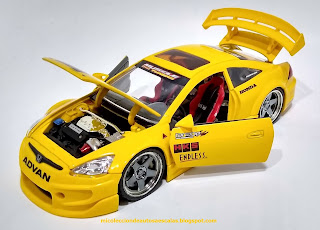The first generation of the Ford Thunderbird is a two-seat convertible produced by Ford for the 1955 to 1957 model year, the first 2-seat Ford since 1938. It was developed in response to the 1953 Motorama display at the New York Auto Show, which showed the Chevrolet Corvette. The Corvette in turn was developed in response to the popularity of European sports cars among Americans.
Dubbed a "a personal car of distinction" by Ford, this appellation was also used by the motoring press at the time. The car built upon the heritage of the bespoke roadsters of the 1930s, yet was constructed largely of existing components, marking the first step toward the evolution of the personal luxury car as a mass market segment in the United States. While light weight for its era and fitted with a standard V8 engine, the Thunderbird focused more on driver comfort than speed, and was not a direct rival to either the Corvette or European sports cars. The Thunderbird proved more suited to the American market than the Corvette, with sales of 16,155, versus 674 Corvettes in 1955. This remained the only two-seat convertible Thunderbird until the eleventh-generation was unveiled in 2002. The design of this generation of the Ford Thunderbird was the direct inspiration for the Auto Union 1000 Sp sports coupe.Este es un blog de fotografías para la colección personal de autos de diferentes escalas.
Monday, November 28, 2022
Monday, November 21, 2022
1932 Ford Delivery Van 1:25 Bank Box
The term 1932 Ford may refer to three models of automobile produced by Ford Motors between 1932 and 1934: the Model B, the Model 18, and the Model 46. These succeeded the Model A. The Model B had an updated four cylinder and was available from 1932 to 1934. The V8 was available in the Model 18 in 1932, and in the Model 46 in 1933 & 1934. The 18 was the first Ford fitted with the flathead V-8. The company also replaced the Model AA truck with the Model BB, available with either the four- or eight-cylinder engine.
The three car models were replaced by the streamlined Model 48 in 1935.
Monday, November 14, 2022
1961Jaguar E Type or Jaguar XKE Burago 1:18
Monday, November 7, 2022
1990 Chevrolet 454 SS Redbox 1:25 Pickup
For 1990, Chevrolet debuted the 454SS as a high-performance variant of the C1500. The first American high-performance pickup truck since the 1979 Dodge Li'l Red Express, the 454SS was a 1⁄2-ton C1500 powered by a 230 hp (172 kW) 7.4 L V8.
Deriving much of its design from the Sport Equipment Package, the 454SS was distinguished by a nearly monochromatic black exterior, gloss-black grille (with red-trim badging), and body-color bumpers and mirrors (borrowing the latter from the Cheyenne). Externally identified by "454SS" bed-side decals, the vehicle received Silverado interior trim, with model-specific bucket seats and interior colors.
To improve the road manners of the vehicle, the 454SS received an upgraded suspension, including 32 mm (1.3 in) Bilstein gas-filled shock absorbers, a 32 mm (1.3 in) front stabilizer bar, and 12.7:1 fast-ratio steering gear assembly
Borrowed directly from the R/V and C/K 3500-series trucks, the 230 hp (172 kW) 7.4 L V8 was mated to a 3-speed THM400 for 1990. For 1991, the 454SS underwent a series of upgrades, centered around an increase of engine output to 255 hp (190 kW) and the introduction of the 4-speed 4L80E overdrive transmission To improve its handling, the 454SS received an upgraded suspension, including 32 mm (1.3 in) Bilstein gas-filled shock absorbers, a 32 mm (1.3 in) front stabilizer bar, and 12.7:1 fast-ratio steering gear assembly; a locking differential was changed to a numerically-higher 4.10:1 axle ratio.
Initially offered solely in black paint and a red interior, Chevrolet introduced a choice of paint colors for the 454SS for 1992, adding red and white monochrome exteriors, along with blue, beige, and gray interiors.
Competing with the similar Ford SVT Lightning, the 454SS was produced through the 1993 model year. In total, 16,953 examples were produced (13,748 were sold for the 1990 model year).Friday, October 28, 2022
2003 Honda Accord Muscle Machines 1:24
The Honda Accord (Japanese: ホンダ・アコード, Honda Akōdo) /əˈkɔːrd/, also known as the Honda Inspire (Japanese: ホンダ・インスパイア, Honda Insupaia) in Japan for certain generations, is a series of automobiles manufactured by Honda since 1976, best known for its four-door sedan variant, which has been one of the best-selling cars in the United States since 1989. The Accord nameplate has been applied to a variety of vehicles worldwide, including coupes, station wagons, hatchbacks and a Honda Crosstour crossover.
Since its initiation, Honda has offered several different car body styles and versions of the Accord, and often vehicles marketed under the Accord nameplate concurrently in different regions differ quite substantially. It debuted in 1976, as a compact hatchback, though this style only lasted through 1989, as the lineup was expanded to include a sedan, coupe, and wagon. By the sixth-generation Accord at the end of the 1990s, it evolved into an intermediate vehicle, with one basic platform but with different bodies and proportions to increase its competitiveness against its rivals in different international markets. For the eighth-generation Accord released for the North American market in 2007, Honda had again chosen to move the model further upscale and increase its size. This pushed the Accord sedan from the upper limit of what the U.S. Environmental Protection Agency (EPA) defines as a mid-size car to just above the lower limit of a full-size car, with the coupe still rated as a mid-size car. In 2012, the ninth-generation Accord sedan, with smaller exterior dimensions, was once again classified as a mid-size car at 119 cubic feet (3.4 m3), falling just shy of the "Large Car" classification. However, the tenth-generation Accord sedan, with similar exterior dimensions, returned to full-size car status with its combined interior space of 123 cubic feet (3.5 m3); the coupe was discontinued in 2017.





















































